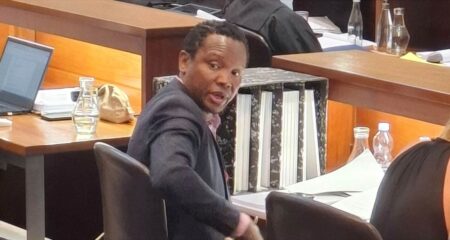M-Pesa has seen an impressive uptake for Vodacom in Tanzania, but the telecommunications operator has struggled to get a solid footing for the mobile money platform in its home market of South Africa.
Part of the reason for success in Tanzania, where M-Pesa moves about US$1,2bn/month — representing more than a third of Tanzania’s gross domestic product — is the poor state of the country’s banking system. Few people in the east African nation are formally banked.
It also has to do with the distances people have to travel to reach a bank and the high transaction costs often associated with traditional financial services. In addition, there aren’t many point-of-sale devices at merchant level outside of the main business and tourist areas in Tanzania, making payments by card virtually impossible in the rural areas.
M-Pesa, a Vodafone invention, was introduced by its operation in Kenya, Safaricom, in 2007. The service was launched in Tanzania a year later, but the initial uptake was slower than expected. The slow adoption in Tanzania was attributed to a combination of factors. Kenya had a more supportive social culture and Safaricom implemented more effective strategies in its roll-out of M-Pesa at the time.
Today, though, Vodacom is a highly competitive market with the three main mobile players — the other two are Tigo and Airtel — all offering mobile money products. Vodacom Tanzania claims it has a 65% share of transactions generated through all financial services.
M-Pesa allows people to store money in a digital wallet, remit that money to family or friends, and even pay for goods. Money can also be withdrawn and deposited from street vendors and store agents, which use M-Pesa as an additional means of income.
One of the key factors that has driven the uptake of M-Pesa among Tanzanians is the growth in the number of agents that support it. Three years ago, the operation had about 20 000 M-Pesa agents. Today, that number has swelled to 73 000, with 2 500 being added each month.
The growth of M-Pesa is intrinsically linked to Vodacom’s strong performance in Tanzania in recent years, according to country MD Rene Meza. “We have effectively doubled the size of our network in the last couple of years,” he says.
“We had two approaches to our strategy in achieving these results. One was to cover the 2G gap that existed in certain parts of the country, and the second was to become market leaders in 3G.”
But M-Pesa has also played a key role. This included ensuring that M-Pesa interconnected with Tanzania’s banks, allowing Vodacom to tap into both the banked and unbanked population.
M-Pesa now represents 22% of Vodacom Tanzania’s service revenues.
M-Pesa in action
TechCentral, which travelled to Tanzania with Vodacom last week, visited Buguruni, one of the most densely populated areas in Dar es Salaam (see photos above).
With a population of 2m, this low-income area is home to thousands of small traders, many of which are also M-Pesa agents.
Vodacom Tanzania head of brand and marketing Kelvin Twissa says M-Pesa was used at first mainly to send money to friends and family, but it has since also become a business tool allowing people to pay for utilities such as water and electricity.
With the recent introduction of a merchant payment solution, retailers can now also receive payments directly from an M-Pesa wallet.
It’s proving popular as there are costs involved with going to an M-Pesa agent and withdrawing money. “Now people can pay a merchant directly and don’t have to incur additional costs,” says Twissa.
M-Pesa agents earn commission from transactions, be it deposits or withdrawals. There is no cost to customers to cash in, but there are costs involved when they cash out. Commissions are tiered, based on the amount being deposited or withdrawn, and start at $0,25/transaction. “An agent doing 1 300 commissions per month will make around $350,” says Twissa. — © NewsCentral Media
- The writer travelled to Tanzania as a guest of Vodacom




